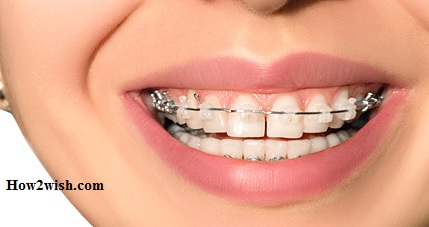Most of us have heard of such a specialty as an orthopedic dentist, but not everyone knows who it is, what it treats, what this dentist does in dentistry, and what manipulations it performs. Specialists of the dental clinic “Dentika” will tell you about this profession in detail.

Specialization
It is a mistake to assume that all the procedures with our jaws are performed by the same dentist. All doctors have their specializations:
- The surgeon performs surgical interventions (for example, is engaged in removal);
- The orthodontist corrects the bite using braces, removable and non-removable plates;
- The periodontist carries out the relief of inflammatory processes in the gum tissues;
- An orthopedist is a dentist who is engaged in prosthetics (if you are looking for a doctor who inserts
- Teeth, and puts crowns on them, then you should go to him).
Each of the listed specialties is narrow-profile. However, all specialists work together, since the oral cavity requires complex and versatile treatment.
More about orthopedics
The orthopedic profile direction as a whole treats pathologies of the musculoskeletal system. Including the doctor’s correct scoliosis, and flat feet.
In dentistry, an orthopedist eliminates disorders and restores health to the chewing and speech apparatus. By installing prostheses, he restores the dentition, thereby giving the patient the opportunity to: chew food, communicate, and smile.
Who is an orthopedic dentist
He must have a diploma of graduation from a medical university and undergo special professional retraining. Only in this case can he be considered a qualified medical worker and provide his services.
Restoration of chewing function not only restores the aesthetics of a smile and the normal state of the jaw. It also ensures the health of the gastrointestinal tract, since everything in our body is interconnected.
This specialization is also called a prosthetist. This is because most often they turn to the doctor for prosthetics. Throughout the treatment, he interacts with other dentists, since in parallel it may be necessary to perform a surgical intervention, stop the inflammatory process, correct the bite, and so on.
Symptoms that need to be referred to this specialist
It became clear what a dentist-orthopedist does in adult dentistry. Now let’s figure out what is the reason for referring to it:
- The absence of one or more teeth due to loss or resection by the surgeon;
- Partial or complete destruction of crowns;
- Mobility or high sensitivity of units in a row;
- Pathology of the gums or bone structures (for example, periodontal disease or periodontitis);
- Aesthetic defects (different sizes, irregular shapes, stains on the enameled surface, etc.);
- Diseases of the temporomandibular joint.
Also, a therapist or other specialized specialist in dentistry can be sent to the orthopedic office based on the examination.

What pathologies does it treat?
We figured out that an orthopedist is a doctor who makes dentures, puts crowns on the teeth, and controls how they take root, and now we’ll tell you who becomes his patient. More precisely, we will consider in more detail the diseases that are considered the reason for contacting him.
Restores chewing function
The inability to chew food normally not only causes physical discomfort to a person but also causes problems with the gastrointestinal tract. In addition, this leads to disturbances in the functioning of the entire dentoalveolar system. As a result, muscle tone worsens, and microcirculation in soft and bone tissues slows down.
With such a pathological condition, you must immediately remember the name of the prosthetist who inserts the teeth and make an appointment with him. If you do not contact an orthopedist promptly, there is a high risk of developing inflammatory processes that will come in periodontitis or periodontal disease.
Preserves the dentition
Very often they come to a specialist with the following problem: the walls are almost destroyed due to a strong carious lesion or injury, but the root and nerve endings are in a normal state. Thus, there is simply nowhere to put a filling, but the doctor can stop further destruction. Then to the “native” structures.
Treats dementia
This is the name of a pathological condition in which there are no units on the upper and/or lower jaw. The dentist can solve this problem in two ways:
- Installation of removable and non-removable prostheses;
- Use of implants.
Thanks to this, it is possible to fully restore motor function. In addition, a person can get rid of complexes that do not allow him to talk and smile calmly, as he is embarrassed by his appearance.

How to Strengthen Gums With Natural Remedies
How is the reception
Before visiting the orthopedic office, it is forbidden to take alcoholic beverages. The fact is that the treatment by this doctor involves the use of anesthesia, and the presence of ethyl alcohol in the body negatively affects its effect.
With the development of inflammatory processes, including colds, a visit to a dentist, who is called an orthopedist, inserts teeth and prostheses, is also better to postpone since during this period any extraneous interference is undesirable. The immune system is weakened and may not respond adequately to various external actions.
Before visiting the dentist, you should thoroughly clean your mouth. If this is not possible, at least rinse it with a special tool.
During the initial treatment, the specialist determines the degree of severity of disorders of the masticatory-jaw apparatus. If necessary, complex therapeutic or surgical treatment can be preliminarily carried out. This is necessary to prepare for orthopedic manipulations. You can consult with all doctors at Dentika Dental Clinic.
Note! First, you need to cure all concomitant diseases, and only then proceed to further actions.
A visual or instrumental examination is carried out, the patient’s complaints are heard, and anamnesis is collected. Next, casts are taken, and the dentition is photographed. If necessary, they can refer to a dental surgeon. Based on the collected data, effective therapy is selected.
Diagnostic methods
Diagnostic studies are assigned individually for each. It can be:
- A panoramic x-ray of the jaw;
- Orthopantomogram;
- X-ray.
A few months after all the manipulations, a control examination is carried out to determine the effectiveness of the selected scheme. Additionally, they can recommend the consultation of other highly specialized specialists. After drawing up a plan of action, treatment begins.
Therapeutic techniques
As it became clear, an orthodontist is a doctor who installs crowns and prostheses, but they are also different, let’s consider what types are used in modern dentistry, including in the Dentika dental clinic.
Installation of fixed structures
They exactly repeat the anatomical features, color, location, and shape of a natural tooth. Thanks to them, it is possible to fully restore functionality (diction, chewing, load, facial symmetry, and so on).
As the name implies, such products are not removed. That is, they are worn permanently. These include veneers, inlays, and so on.
From cermet
This is the most common type, which is intended to be worn without the possibility of removal. It is a cap made of an alloy of cobalt, chromium, and titanium with a ceramic coating.
Advantages:
- Affordable cost;
- Invisibility (imitates real teeth);
- Service life from 5 to 10 years.
In most cases, they get along well. The main thing is that they are made of quality material. In the presence of impurities, oxidation and the development of inflammatory processes in the gums are possible.
Made from zirconia
It is considered one of the most advanced. When creating prostheses, computer technologies are used. The design is modeled on a computer, which allows it to achieve high accuracy in shape and size. Compared to the previous variety, there is a much larger selection of shades. Thanks to this, you can create a crown that will not stand out from your teeth.
It is a cap made of zirconia coated with ceramic. This is an innovative material that does not provoke allergic reactions and does not enter into the oxidative process.
All-ceramic dentures
Are established on front dental units. There is no metal in them, which allows you to accurately convey the natural tone of the enameled surface.

Installation of removable structures
They are used in cases where the use of non-removable options is impossible for some reason. There are two types:
- Fully removable. They are placed in case when the patient is completely missing teeth. They are held on the gums due to the occurrence of negative pressure, which creates the effect of “sucking” the jaw.
- Partially removable. They are resorted to when a person lacks most of the dental units, they are not enough for fixed prosthetics.
Such prostheses have the following advantages:
- Applicable in the presence of periodontal disease;
- Ease of maintenance and the possibility of correction;
- Speed of production (it takes no more than 3-4 weeks);
- Affordable cost;
- Restoring a beautiful smile even if all or most of your teeth are missing.
Among the shortcomings, one can single out the fact that it will be necessary to get used to such structures, and this will take a lot of time. For several weeks it can be difficult to talk normally or chew, and discomfort is felt.
Remember! The mood of the patient plays a big role in successful prosthetics. Specialists of the dental clinic “Dentika” recommend preparing for the manipulation at the psychological level. Of course, the first desire that may arise is to remove an uncomfortable prosthesis. But it must be overcome. Then you will quickly get used to it, and everything will go smoothly.
Metal-free ceramics
This is a modern technology that involves the use of innovative materials. A one-piece crown is installed through which the light passes as deeply as possible. Thanks to this, it is possible to accurately reproduce the natural color.
Typically, such structures are placed on the frontal dental units. Preparing is not required. Thanks to this, it is possible to achieve high aesthetics.
Clasp prostheses
They are an arc with a pair of supports, which are held on artificial teeth. The specialist fixes it on the upper jaw.
The advantages of such a system include the absence of the need for surgical intervention and low price. This is an excellent solution when it is impossible to place fixed crowns due to contraindications, and there is no money for implantation.
However, it should be borne in mind that there are also disadvantages. First, you need to adapt to the devices. Secondly, they will have to be removed and cleaned daily, and this will take time. Thirdly, a full load is not created when chewing food. Because of this, the blood supply worsens, and the bone gradually sags. Therefore, the design will have to be changed quite often.
Implantation
To date, this is the most effective way to restore one or more teeth. This procedure is preferable in comparison with the others, therefore it is recommended by all dentists.
It allows you to return not only aesthetics but also health. Moreover, both the chewing apparatus and the gastrointestinal tract. In addition, it also improves the psycho-emotional state, as patients often suffer from complexes due to the presence of defects.
Implantation has come a long way in dentistry. A couple of decades ago, it was an experimental direction. Many experts considered it unpromising. However, now this technique is the most popular.
It is important to understand that an implant is not a prosthesis. That is, it is not installed on your tooth, or over the gums. It is a titanium pin, which is implanted into the tissue and replaces the root. But the tooth tip is replaced by an artificial crown. Any other technologies do not imply the replacement of the root part.
The procedure has the following advantages:
- The possibility of eliminating defects both in the upper and lower jaws, regardless of their location and extent;
- There is no need to grind adjacent bone structures;
- Faster adaptation in comparison with other types of structures;
- Uniform distribution of the load during chewing, which prevents the destruction and deformation of the bone;
- Long service life;
- Visual aesthetics, implants cannot be distinguished from real teeth;
- Can be placed immediately after the removal of the dental unit;
- Ease of care, it is practically no different from cleaning the oral cavity without implantation.
The disadvantages include the high cost, but it will pay off due to comfortable wearing and a long period of operation.
A comprehensive approach to treatment
Once again, I would like to note that the work of an orthopedist constantly intersects with the activities of other specialized specialties: a surgeon, a therapist, and so on. For example, before embarking on orthopedic manipulations, it is mandatory to sanitize the mouth, remove plaque and stone, and cure concomitant diseases, which are carried out in the therapy room.
The surgical task is to remove structures that can no longer be preserved. In addition, it is the dentist-surgeon who implants the pin instead of the root, on which the crown is subsequently placed.
There is constant interaction with technical specialists. They are engaged in the manufacture of prostheses in a special laboratory.
Let’s summarize. We told you the name of the doctor who deals with prosthetics, who inserts artificial teeth. All this is done by an orthopedist. Undoubtedly, his work is invaluable, because thanks to him, people who have already lost all hope of returning a beautiful smile and the functionality of the chewing apparatus, get the opportunity to live a full life.